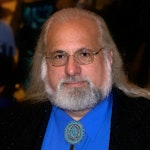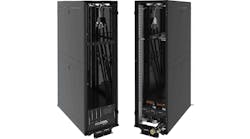Circling Back: What Now for Quantum Loophole and the Quantum Frederick Data Center Campus?
Quantum Loophole and TPG Real Estate Partners (TREP) have recently resolved a legal dispute concerning the management of the Quantum Frederick Project, a 2,100-acre data center campus in Frederick County, Maryland. As part of the settlement, Quantum Loophole has stepped back from active involvement in the project, with Catellus Development Corporation, a TPG affiliate, assuming full managerial responsibilities.
The dispute began in September 2024 when TPG filed a lawsuit seeking to remove Quantum Loophole from its role as manager of the project, citing concerns over the company's experience with large-scale infrastructure development and alleged misrepresentations. Quantum Loophole responded with its own lawsuit against TPG, alleging breach of contract and fiduciary duty.
In December 2024, both parties agreed to dismiss all litigation, reaching an amicable resolution. Quantum Loophole will no longer be actively involved in the Quantum Frederick Project but plans to pursue other data center developments across the United States.
Background
Quantum Loophole, founded in 2019 and based in Austin, Texas, had positioned itself as a pioneering force in the data center industry, with its Ecoscale model combining land, water, power, and fiber to build data center campuses.
Specializing in the development of gigawatt-scale data center campuses, the company development model addresses the scalability, connectivity, and cost-efficiency challenges faced by today's large-scale deployments.
By offering master-planned data center communities, Quantum Loophole wants to enable hyperscalers, enterprises, and colocation providers to expedite their go-to-market capabilities.
Off to a Promising Start
In 2021, Quantum Loophole announced the acquisition of over 2,100 acres in Frederick County, Maryland, marking the inception of the Quantum Frederick project.
Strategically located approximately 20 miles north of Northern Virginia's internet ecosystem, this development aimed to revolutionize data center site selection by providing a holistic approach that considers community, environmental, and governmental factors.
Central to this vision was the construction of QLoop, a 40-mile hyperscale fiber ring designed to connect Quantum Frederick directly to Northern Virginia's Data Center Ecosystem. At full capacity, QLoop's 34 conduits were projected to hold over 235,000 strands of fiber, facilitating data transmission between the two hubs in under one millisecond round-trip time.
Meanwhile, demonstrating a commitment to environmental stewardship, Quantum Loophole, in partnership with the University of Maryland, broke ground on a 600-acre Nature Reserve within the Quantum Frederick campus in April 2024.
This initiative aimed to transform a site with a history of industrial use into a carbon-negative industrial development, featuring one million native trees to optimize carbon capture and enhance biodiversity.
The Nature Reserve was also designed to act as a buffer between human and industrial environments, ensuring the health of the viewscape, soundscape, and the community by using berms, trees, and public trails to create benefits beyond traditional data center development.
The development of the data center project was deemed so important to Maryland’s future that the state actually changed the focus of some of their environmental protections in the Critical Infrastructure Streamlining Act of 2024 which was signed into law in May of 2024, after Aligned Data Centers pulled out of the Quantum Loophole campus due to issues getting backup power generation approved, taking a potential $40 million in tax revenue from the state’s coffers.
Challenges, Not to the Project's Scale, But to How It Was Being Run
In September 2024, TPG RE III Volt Holdings LP, an affiliate of global asset manager TPG, initiated legal proceedings against Quantum Loophole, Inc. in the Delaware Court of Chancery, to remove Quantum Loophole from its managerial role, citing disputes over the management and development of the $5 billion data center campus.
The lawsuit alleged that Quantum Loophole had mismanaged the development of a substantial data center campus and its associated fiber-optic infrastructure, known as QLoop, in Frederick County, Maryland.
The specific allegations outlined by TPG included:
- Neglecting to Apply for Necessary Permits: Quantum Loophole reportedly failed to secure essential permits required for the project's progression.
- Breaching Commitments to Frederick County: The company allegedly did not fulfill its obligations as stipulated in a Letter of Understanding with Frederick County, which encompassed various infrastructure improvements.
- Engaging Contractors Who Trespassed on Adjacent Properties: Contractors hired by Quantum Loophole were accused of unauthorized entry onto neighboring lands and improper installation of fiber-optic cables.
- Redesigning the Campus' Dewatering System to Circumvent Permitting: The company purportedly altered the dewatering system's design to avoid obtaining a dewatering permit from the state of Maryland.
- Lack of Financial Transparency: Quantum Loophole was accused of not providing TPG with appropriate budgetary information related to the project's expenditures.
In response to these issues, TPG sought a declaratory judgment to confirm the validity of its decision to remove Quantum Loophole as the manager and developer of the project. TPG proposed appointing its affiliate, Catellus Development Corporation, to assume full responsibility for the project's management and execution.
By December 2024, both parties reached an amicable resolution. Quantum Loophole agreed to relinquish its managerial and developmental roles in the Quantum Frederick Project. Consequently, TPG assumed full managerial control, reaffirming Catellus Development Corporation as the sole developer responsible for overseeing all aspects of the project's day-to-day management and execution. Catellus has been in the business of developing large scale land development projects since 1984.
All litigation between the companies was dismissed as part of this resolution and according to the Quantum Loophole press release “the parties have and will have no further comment on this matter.”
Onward
Despite these setbacks, Quantum Loophole continues to explore opportunities across the United States to implement its model for integrating land, energy, water, and fiber resources to support the hyperscale and AI data center sectors.
The company believes this approach not only addresses the technical demands of large-scale data operations but also emphasizes environmental sustainability and community integration, setting a standard for future data center developments.
The developments recounted above however mark a significant shift in the Quantum Frederick project's leadership, with TPG and Catellus now solely responsible for its execution.
Meanwhile, the Quantum Frederick project continues in its aim to deliver environmentally sound data center capabilities to Maryland, with expectations of driving substantial economic growth and job creation in Frederick County.






